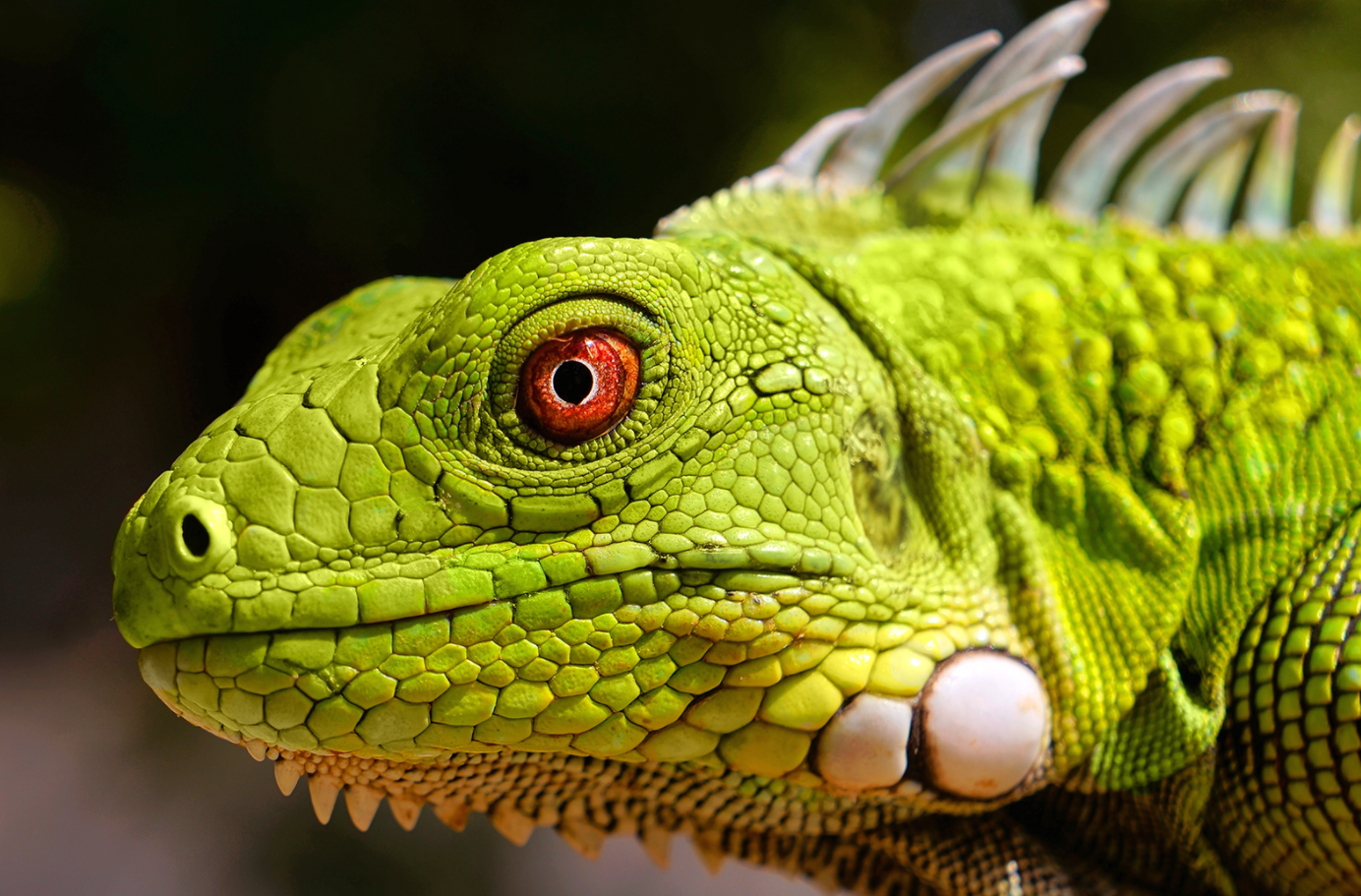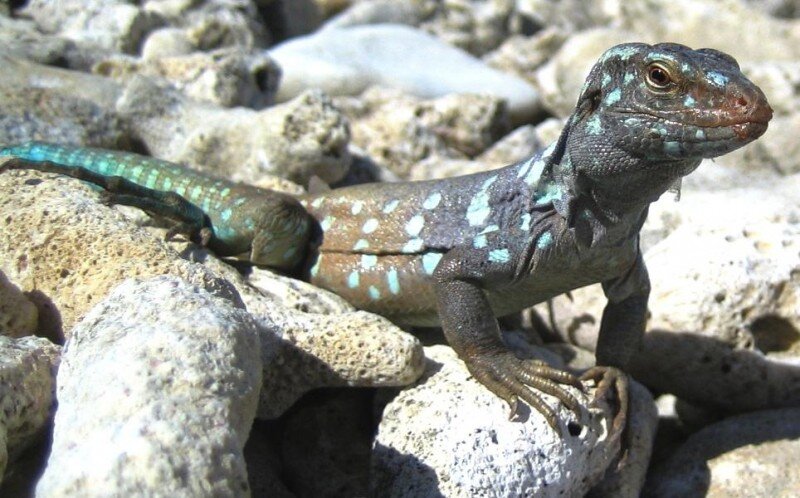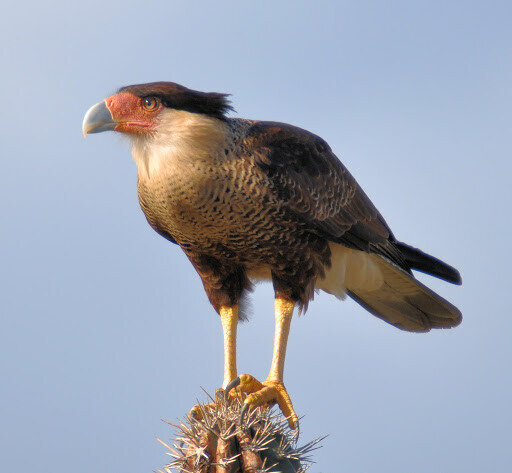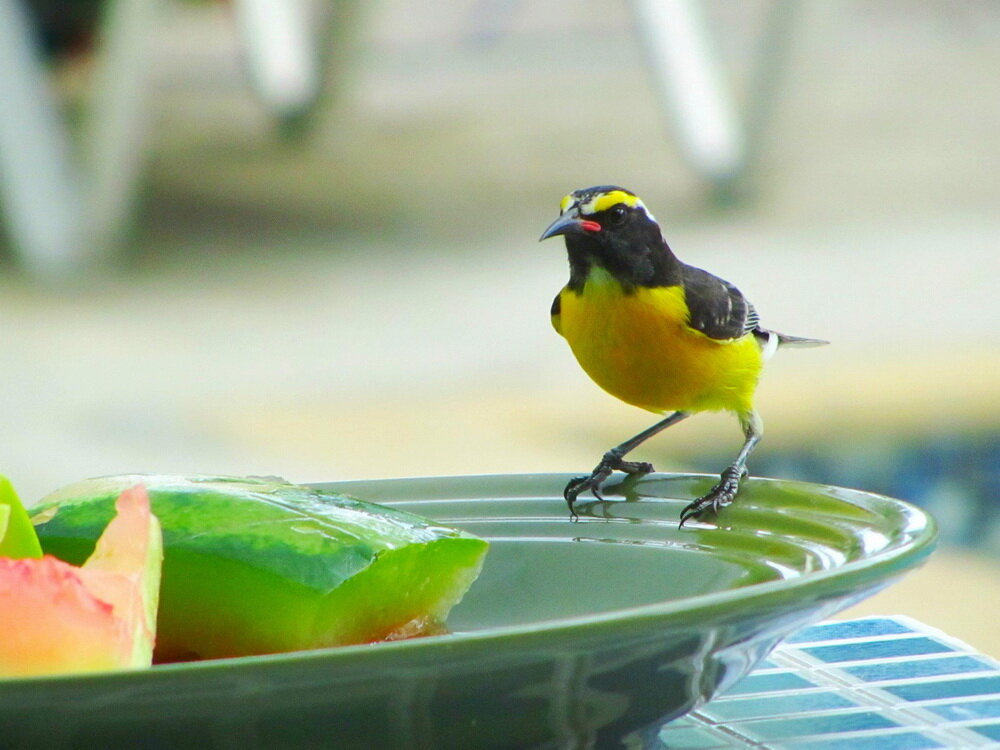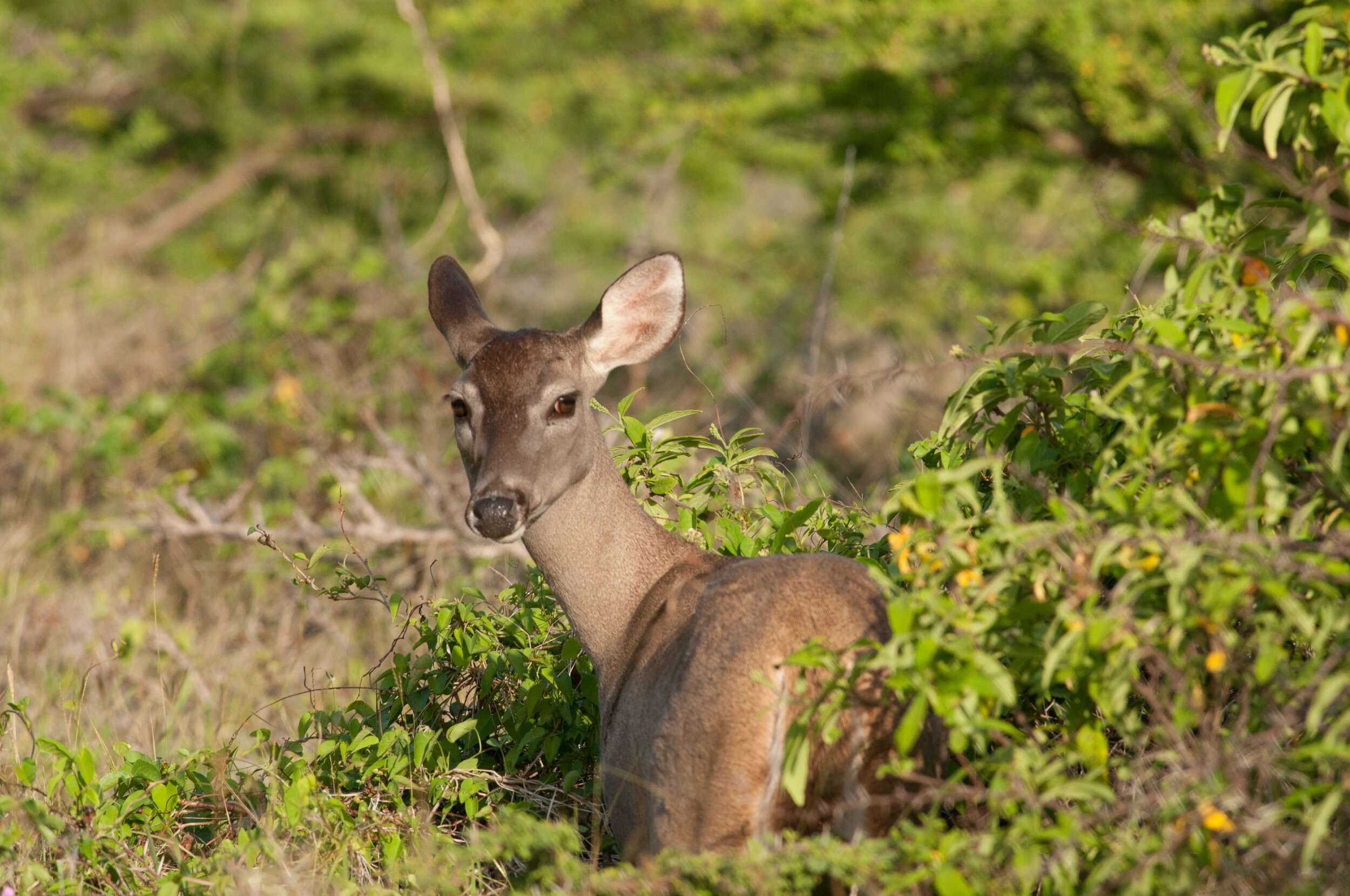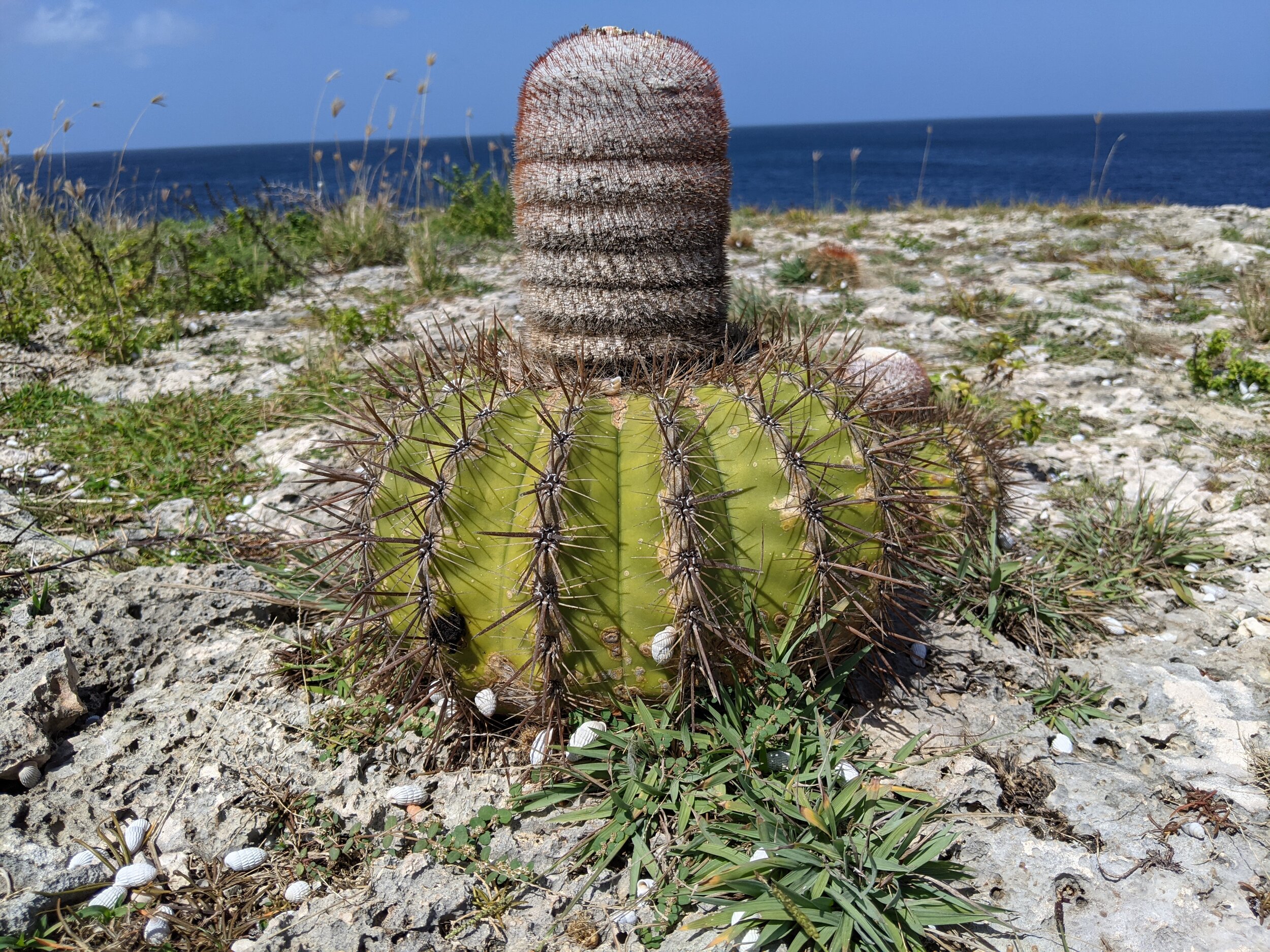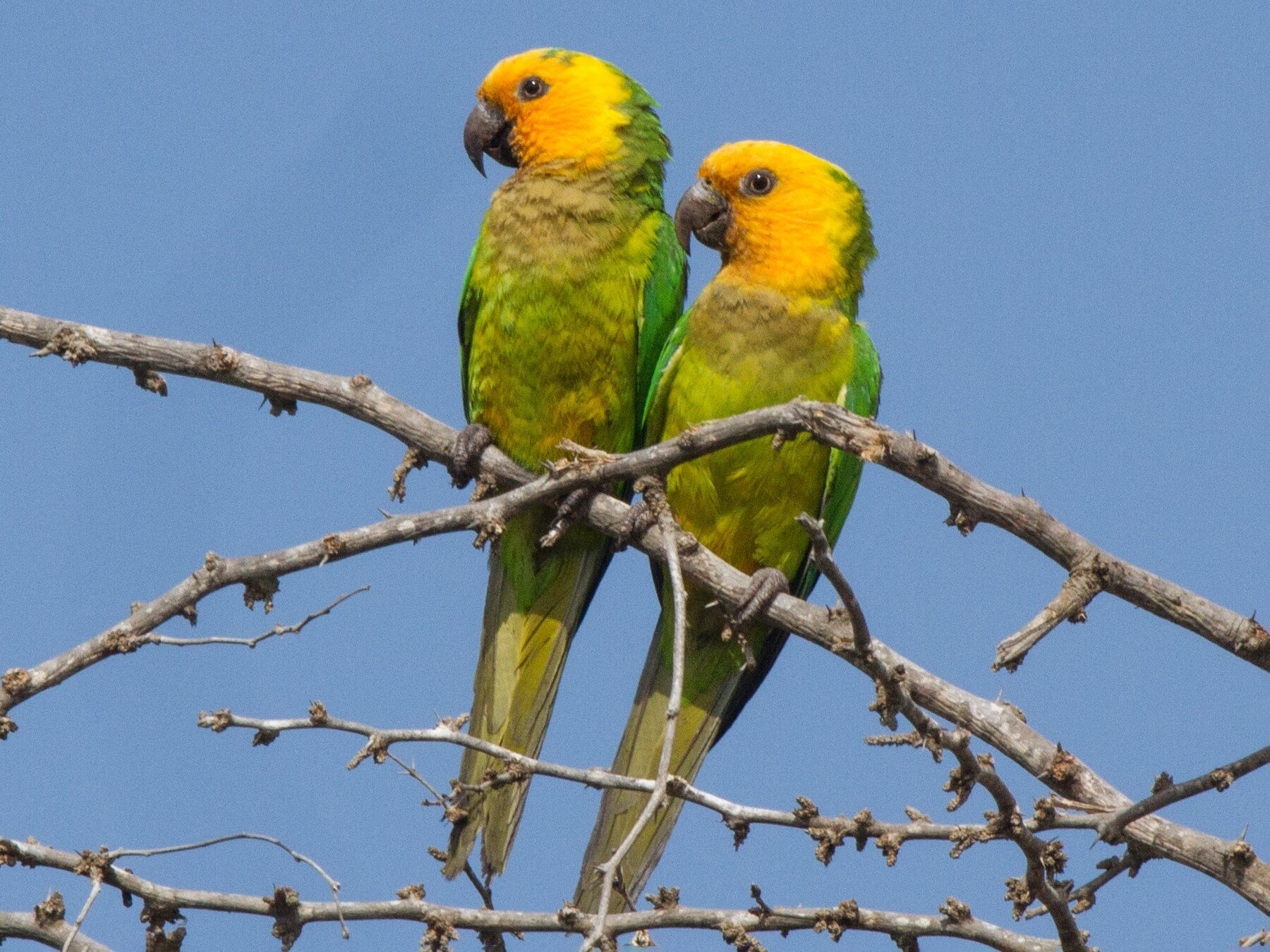Curacao’s Fauna, Fish & Fowl
Watamula Cactus Scrublands is a haven for over two hundred bird species and other wildlife.
Iguanas: Your Sun-Loving Villa Friends
As you lounge by the Villa pool, enjoying the sunshine, when you spot a spiky green figure lounging right alongside you. That’s your friendly neighborhood iguana, the unofficial mascot of villa life in Curaçao. These chill creatures are the epitome of island vibes—soaking up the sun and moving only when absolutely necessary. They can live over 15 years in the wild and grow up to an impressive six feet long from nose to tail tip.
Here’s a cool fact: Iguanas rely on sunlight to help their skin produce vitamin D, which is essential for absorbing calcium from their diet. They’re perfectly at home in Curaçao’s sunny climate. But watch out for their tail—it’s their built-in defense system. If they feel threatened, they’ll whip it around to ward off predators. And if they lose their tail? No problem—it grows back like magic. Nature truly thought of everything with these guys!
Whiptail Lizards: The Locals with a Twist
You’ll notice these quick-footed lizards darting across pathways and sun-warmed rocks. The thin brown ones are the females and juveniles, affectionately called Lagadishi, while the larger blue-green males, known as Blò-blò, flash their vibrant colors in the sun. These lizards are so common, they feel like part of the island’s personality.
What makes them extra special is how they reproduce. Unlike most animals, they use parthenogenesis, which means the females can produce offspring without needing males to fertilize their eggs. But it’s not all science—there’s a touch of romance. Female-female courtship behaviors actually stimulate ovulation. Who says you need a traditional love story to make life interesting?
Wara Wara: The Ground-Hunting Scavenger
Look closely, and you might see a Wara Wara strutting through the scrub, scanning the ground for its next meal. These birds, known elsewhere as Caracaras, are a blend of scavenger and hunter, cleaning up carrion while also hunting insects and small animals.
Here in Curaçao, Aruba, and Bonaire, they’re called Wara Wara, a name that feels as unique as their solitary habits. With sharp beaks and piercing eyes, they’re striking birds that play an important role in keeping the island’s ecosystem balanced.
Trupial: The Bold Table Guest
No breakfast or outdoor meal is complete without a visit from the Trupial. This bold bird, with its bright orange and black plumage, isn’t shy about approaching your table for crumbs. Locals nicknamed it "Trupial Kachó" because its call sounds strikingly similar to a barking dog.
Their nests are just as fascinating as the birds themselves. Hanging from tree branches, these grassy, bag-like constructions sway gently in the breeze, adding a rustic charm to the island’s landscape. Whether they’re serenading you with their unique song or sneakily eyeing your toast, the Trupial is always entertaining.
Blenchi: The Tiny Speedster
The Blenchi, or blue-tailed emerald hummingbird, is the island’s tiniest showstopper. At just 8 cm (3 inches) long, it’s easy to miss—until you catch a glimpse of its iridescent green body and shimmering blue tail darting among the flowers. These hummingbirds are incredible pollinators, helping the peninsula’s plants thrive while dazzling visitors with their speed and grace.
Watching a Blenchi hover mid-air is like seeing a jewel come to life. With wings beating up to 50 times per second, they move with such agility that they seem to defy gravity. They’re not just nectar drinkers, though—they also snack on insects and spiders, making them a vital part of the ecosystem.
Their nests, made from spider silk and plant fibers, are a marvel of engineering. These tiny, stretchy homes expand as the chicks grow, showcasing nature’s ingenuity. And don’t be fooled by their delicate appearance—Blenchis are fiercely territorial and will dive-bomb much larger birds to protect their turf. These little speedsters pack a punch!
Lionfish: Beauty and the Feast
At first glance, the lionfish is a stunning addition to Curaçao’s waters, with its flowing fins and striking stripes. But this beauty hides a darker side. Native to the Indo-Pacific, lionfish have become an invasive species in the Caribbean, preying on local fish and disrupting marine ecosystems.
Fortunately, there’s a delicious solution: eat them! Lionfish are a delicacy, and by ordering them at a local restaurant, you’re not just treating yourself—you’re helping to protect the reef. With firm, white flesh and a mild flavor, they’re perfect for ceviche, tacos, or simply grilled. Saving the ecosystem never tasted so good!
Curaçao’s White-Tailed Deer: A Living History
You might not expect to find deer on an island like Curaçao, but these white-tailed beauties have been here for thousands of years. Legend has it they’re descendants of deer brought over by indigenous peoples more than 4,000 years ago. Over time, they’ve adapted to the island’s dry conditions, making them a rare and remarkable sight.
Spotting one feels like stepping back in time, connecting with a piece of Curaçao’s ancient history. These deer are shy but resilient, a testament to the island’s ability to nurture life in even the harshest conditions.
Flora:
Milon di Seru: Cliffside Guardians
Perched precariously around the Cliff Villa Peninsular, the Milon di Seru cactus is a true survivor. Its roots stretch deep into the rocky soil, seeking out precious water in one of the island’s driest regions. These cacti are a vital part of the cliffside ecosystem, stabilizing the soil and providing shelter for smaller creatures.
But be warned—these plants are as delicate as they are tough. Pull one up, and its intricate root system will be damaged beyond repair. Admire them from afar and let them continue their quiet work.
Divi Divi: The Tree That Points the Way
The Divi Divi is more than just a tree—it’s a symbol of Curaçao’s resilience. Shaped by the constant trade winds, it leans southwest, creating a natural compass across the island. With its twisted trunk and sparse foliage, it’s a sculptural wonder that seems to embody the spirit of the island itself: strong, adaptable, and full of character.
Wabi: The Fire-Loving Acacia
The Wabi tree may look unassuming, but it’s a master of survival. Blanketing the Watamula preserve, it thrives in the dry, harsh conditions of Curaçao’s climate. What’s more, fire—normally a destructive force—actually helps its seeds germinate. It’s a powerful reminder of how life can emerge stronger even in the face of adversity.
Calabash Tree: The Crafty One
The Calabash tree, known locally as Kalbas, is a treasure trove of utility. Its large, round fruits aren’t for eating, but they’re incredibly versatile, used to make bowls, utensils, and even decorative items. The tree itself, with its sprawling branches and unique fruit, adds a touch of whimsy to the landscape.
Watapana Tree: Twisted Beauty
With its gnarled branches and weathered appearance, the Watapana tree (also called the dyewood tree) is a striking presence on the peninsula. Once prized for its dye, it now stands as a testament to Curaçao’s rugged beauty, blending perfectly with the island’s windswept terrain.
Aloe Vera: Nature’s Healer
This humble plant is a staple of Curaçao’s natural landscape and your personal first-aid kit. Its thick, spiky leaves are packed with soothing gel that’s perfect for treating sunburns or insect bites. Found growing wild around the villa, Aloe Vera is a reminder that nature often provides exactly what we need, right when we need it.
For more information on Caribbean biodiversity contact The Caribbean Research and Management of Biodiversity (CARMABI) is a non-profit foundation on the island of Curaçao in the Dutch Caribbean. Carmabi was established in 1955 to oversee Marine and Terrestrial Research, Park Management, Nature and Environment Education and Consultancy.

